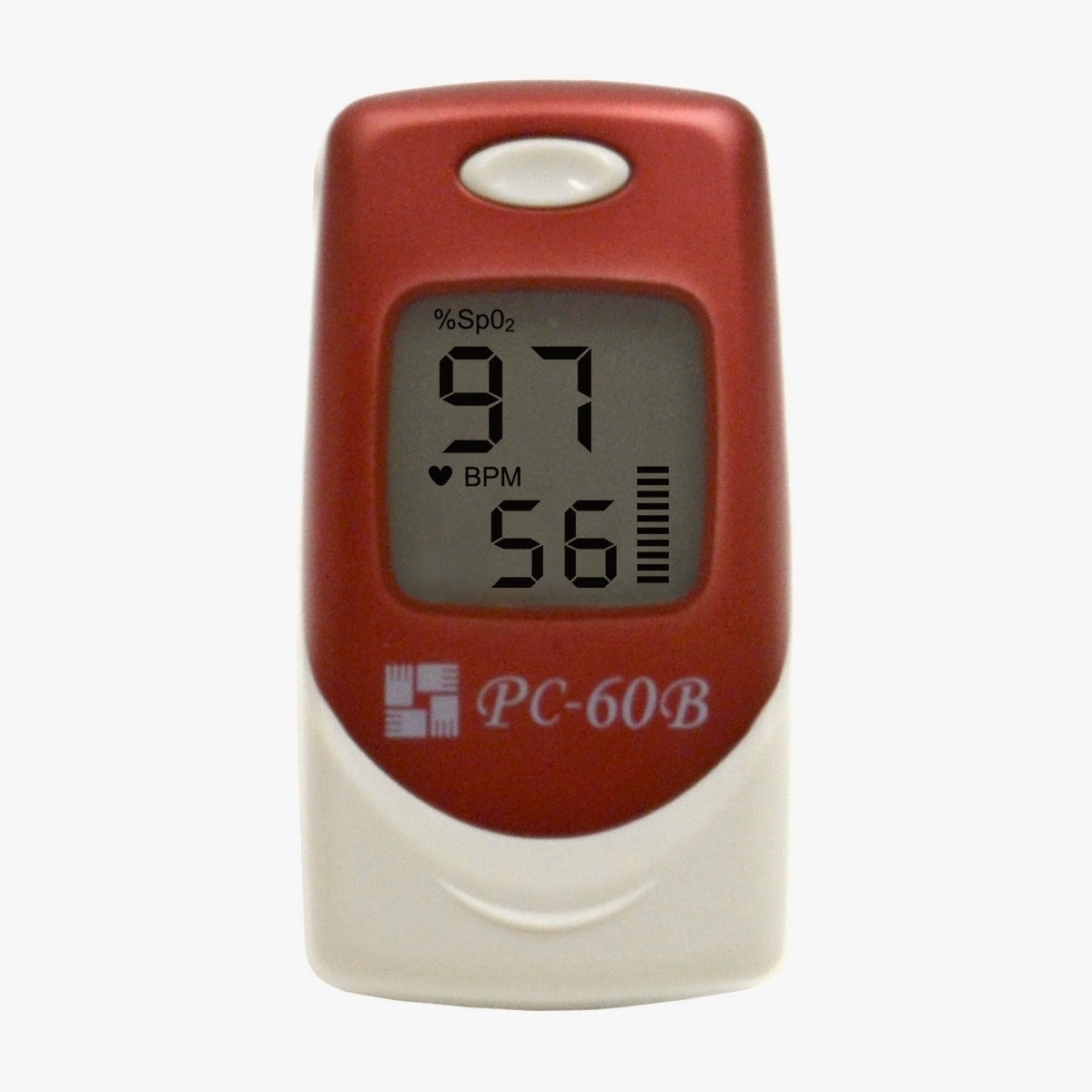A
pulse oximeter
is a simple device that measures SpO2,
or
blood oxygen saturation level, and pulse rate (BMP). Typically you
attach a sensor to your fingertip or earlobe, or to a child’s foot
to get a reading. For a healthy individual, blood oxygenation levels
should be in the 95 to 99 percent range.
When
purchasing a pulse
ox,
consider the features that will meet your needs. Units can cost
anywhere from $30 to several thousand for the professional models
used in hospitals. A simple device that provides accurate readings
and is medically approved should be adequate for most home users.
If
you want to pay a little more, you may get added features such as a
color display and the ability to store and report long ranges of
data. This feature can be very useful if you have a chronic condition
you need to monitor and report back to your physician. If you have
children, you may consider a pediatric oximeter or a hand held unit
with a pediatric probe.
Testing
the unit you choose against actual blood tests will guarantee not
only the accuracy of the unit, but also that you understand how to
use it correctly. Most reputable companies offer a refund on their
products, so you can choose another unit if you find a discrepancy
after comparison.
Other
factors to consider include alarms and overall durability. Some
patients need a pulseox
with an audible alarm so they are alerted immediately to low
oxygenation levels. As for durability, some units are designed to
resist humidity or be shock resistant in case you drop them. It pays
to do a little research to find out what features are available and
which ones will be most useful to you.

No comments:
Post a Comment